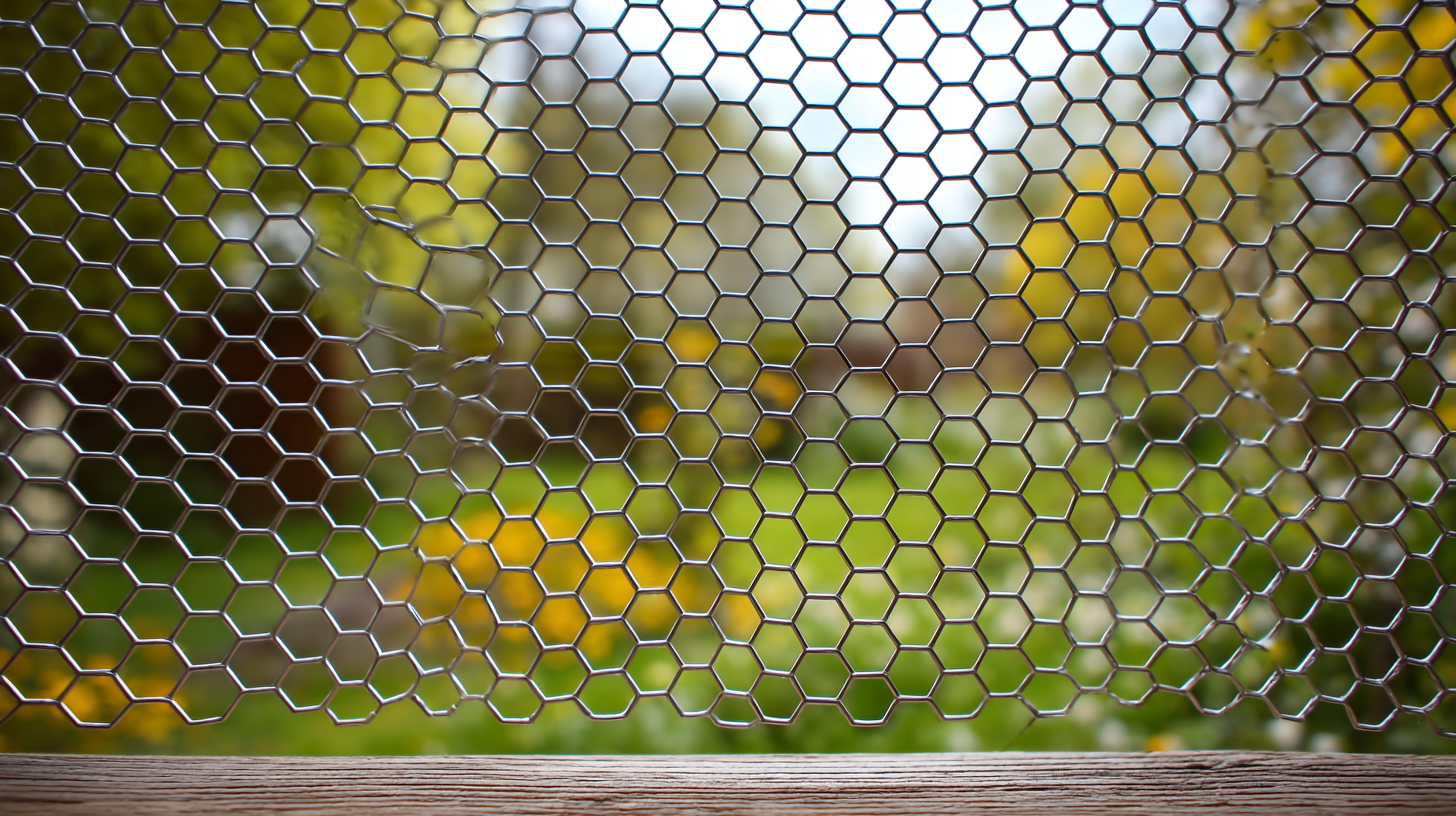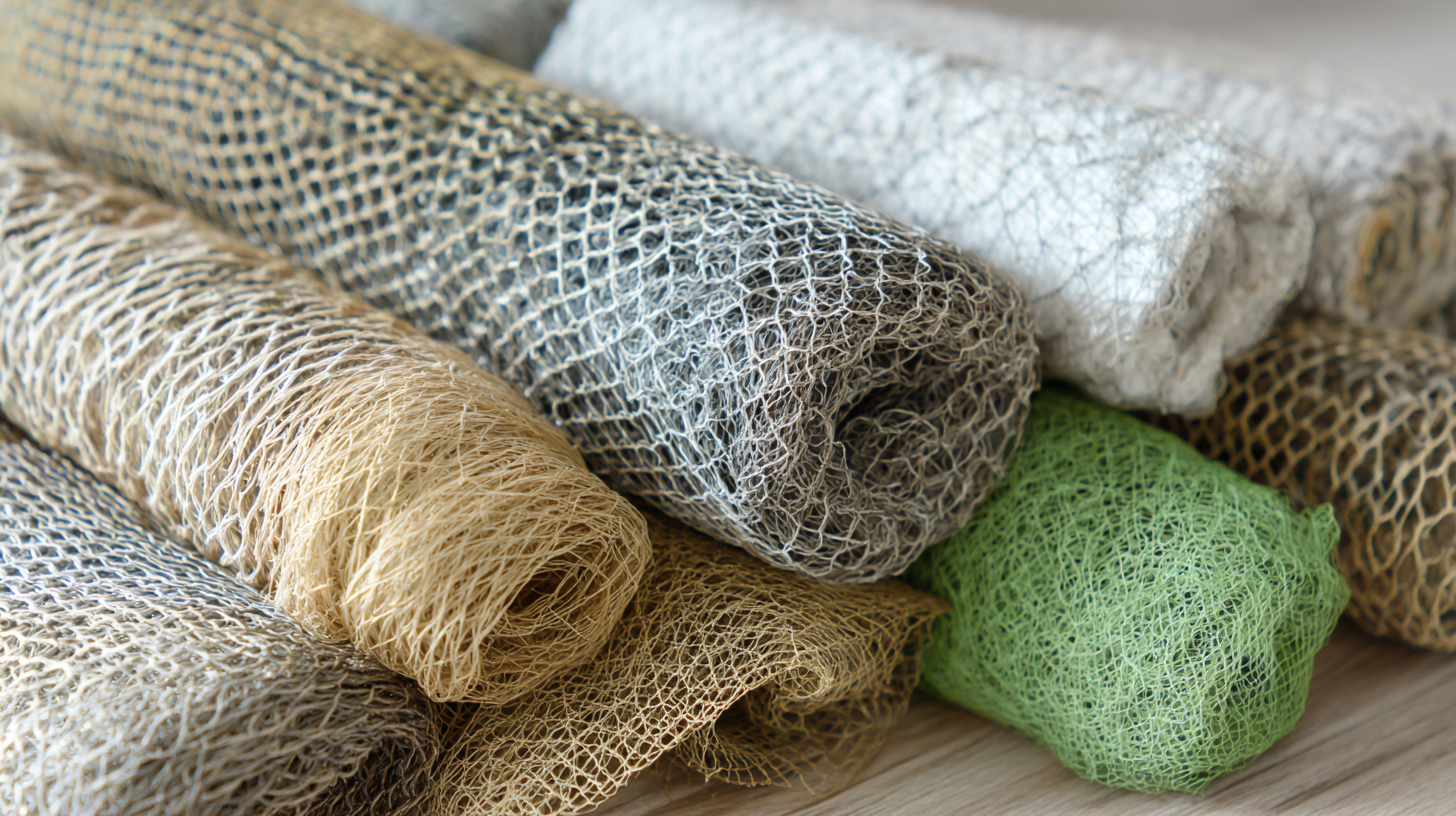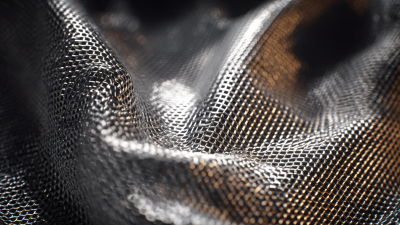 No. 14, Building 2, No. 367 Beijing Road, Chengdu Economic and Technological Development Zone (Longquanyi District)
No. 14, Building 2, No. 367 Beijing Road, Chengdu Economic and Technological Development Zone (Longquanyi District)

Choosing the right type of fine mesh for your home and garden is essential for enhancing functionality and aesthetics while ensuring protection against unwanted pests and debris. According to a report by the Garden Retail Association, over 60% of gardeners now incorporate various types of fine mesh solutions into their outdoor spaces, indicating a growing trend towards protective gardening practices. Fine mesh can serve multiple purposes, from safeguarding plants from insects to preventing soil erosion and offering privacy in outdoor settings.

With a myriad of options available, including materials like fiberglass, polyester, and metal, understanding the specific needs of your garden is crucial. This guide will provide insights into selecting the best fine mesh that aligns with your requirements, ensuring that you make an informed choice that not only enhances your garden's beauty but also its health and sustainability.
When it comes to selecting the right fine mesh for your home and garden, understanding the different types is crucial. Fine mesh materials come in a variety of sizes and compositions, each suited for specific applications. For instance, stainless steel mesh is renowned for its durability and resistance to corrosion, making it ideal for outdoor projects. On the other hand, nylon mesh is lightweight and flexible, perfect for indoor gardening or crafting purposes.
When evaluating mesh sizes, it's essential to consider the intended use. A finer mesh will provide better filtration and protection against smaller pests, making it suitable for vegetable gardens. Conversely, a coarser mesh is effective for applications requiring airflow while keeping larger insects at bay.
**Tip:** Before making a purchase, always measure the area you intend to cover and factor in the specific needs of your plants or projects. Additionally, check the mesh's UV resistance rating if you plan to use it outdoors, ensuring it withstands the elements for a prolonged period.
Fine mesh has emerged as an essential addition to both home and garden settings, providing a range of benefits that cater to various needs. One of the primary advantages of fine mesh is its ability to protect plants from pests and diseases while allowing essential sunlight and water to permeate. This balance not only fosters healthier growth but also minimizes the need for chemical interventions, promoting a more sustainable gardening practice. Furthermore, fine mesh can act as a barrier against debris, helping to keep outdoor spaces tidy and reducing maintenance efforts.
In home applications, fine mesh serves multiple purposes—from improving ventilation in living spaces to enhancing security by providing a protective screen for windows and doors. Its versatility makes it ideal for environments where both air circulation and safety are priorities. Additionally, homeowners can benefit from the lightweight and durable nature of fine mesh materials, which are designed to withstand various weather conditions while requiring minimal upkeep. As data-driven insights continue to highlight these advantages, fine mesh is poised to become increasingly popular among homeowners and gardeners alike, driving a shift towards more environmentally friendly practices in both spheres.
 When selecting fine mesh for home and garden use, understanding the right mesh density is crucial. Industry standards suggest that a mesh density of 18 to 20 per inch is ideal for preventing insects while allowing sufficient airflow. According to a report by the American Society for Horticultural Science, a finer mesh with a density of 30 per inch can effectively block even the smallest pests while maintaining light penetration necessary for plant growth. This range is particularly recommended for vegetable gardens and flower beds that require protection from aphids, beetles, and other harmful insects.
When selecting fine mesh for home and garden use, understanding the right mesh density is crucial. Industry standards suggest that a mesh density of 18 to 20 per inch is ideal for preventing insects while allowing sufficient airflow. According to a report by the American Society for Horticultural Science, a finer mesh with a density of 30 per inch can effectively block even the smallest pests while maintaining light penetration necessary for plant growth. This range is particularly recommended for vegetable gardens and flower beds that require protection from aphids, beetles, and other harmful insects.
In addition, various applications may necessitate different mesh densities; for instance, landscaping projects may benefit from a coarser mesh (10 to 14 per inch) to shield plants from birds and larger pests without compromising water drainage. The National Association of Landscape Professionals emphasizes that choosing the appropriate mesh density not only enhances plant health but also reduces maintenance costs by decreasing the need for chemical pest control methods. By adhering to these industry insights, homeowners and gardeners can select the most effective fine mesh to protect their outdoor spaces while promoting a sustainable environment.
When selecting the finest mesh solutions for home and garden applications, homeowners must consider the long-term cost-effectiveness of their choices. Recent studies indicate that investing in high-quality fine mesh can yield significant returns over time. According to a report by the American Society of Landscape Architects, homeowners can save up to 30% on pest control costs when using fine mesh screens and barriers, as they effectively prevent infestations without the need for chemical treatments.
Furthermore, fine mesh materials can enhance the longevity of your garden infrastructure. The National Gardening Association highlights that durable fine mesh can extend the life of garden beds and structures by protecting them from environmental factors like pests and debris. Investing in fine mesh not only minimizes maintenance expenses but also boosts property value. Research from the Home Improvement Research Institute suggests that properties equipped with effective pest management solutions, including fine mesh, can see an increase in overall market value by as much as 10%. Thus, careful consideration of fine mesh options can lead to substantial long-term savings and enhanced property appeal.

When it comes to maintaining fine mesh products in your home and garden, adhering to best practices can ensure longevity and effectiveness. Fine mesh is often used in applications like gardening, screening for pests, or as decorative elements. Regular cleaning is crucial; it minimizes debris buildup that can compromise functionality. Use a soft brush or a damp cloth to gently remove dirt or leaves, and avoid harsh chemicals that could damage the material.
Another important tip is to store your fine mesh items properly when not in use. Keep them in a dry, sheltered area to prevent rusting or degradation, especially if they are made from metal. Additionally, inspect your mesh regularly for tears or loose edges. Addressing these minor issues promptly can prevent more significant wear and prolong the life of your products.
Lastly, consider the environmental influences your mesh may be exposed to. If you live in a particularly windy or rainy area, choose high-quality mesh that can withstand heavy conditions. Materials like stainless steel or UV-resistant polymers are excellent options for durability. By following these maintenance tips, you can ensure your fine mesh products remain in optimal condition and serve their purpose effectively.
| Mesh Type | Material | Best Use | Maintenance Tips | Durability |
|---|---|---|---|---|
| Stainless Steel Mesh | Stainless Steel | Garden Protection | Regular cleaning, avoid harsh chemicals. | High, resistant to rust. |
| Polyester Mesh | Polyester Fabric | Insect Screens | Wash with mild soap and water. | Moderate, UV resistant. |
| Nylon Mesh | Nylon Fiber | Drainage Systems | Do not expose to high temperatures. | Low, can degrade under UV. |
| Aluminum Mesh | Aluminum | Roof Ventilation | Occasional inspection for wear. | High, resistant to corrosion. |





